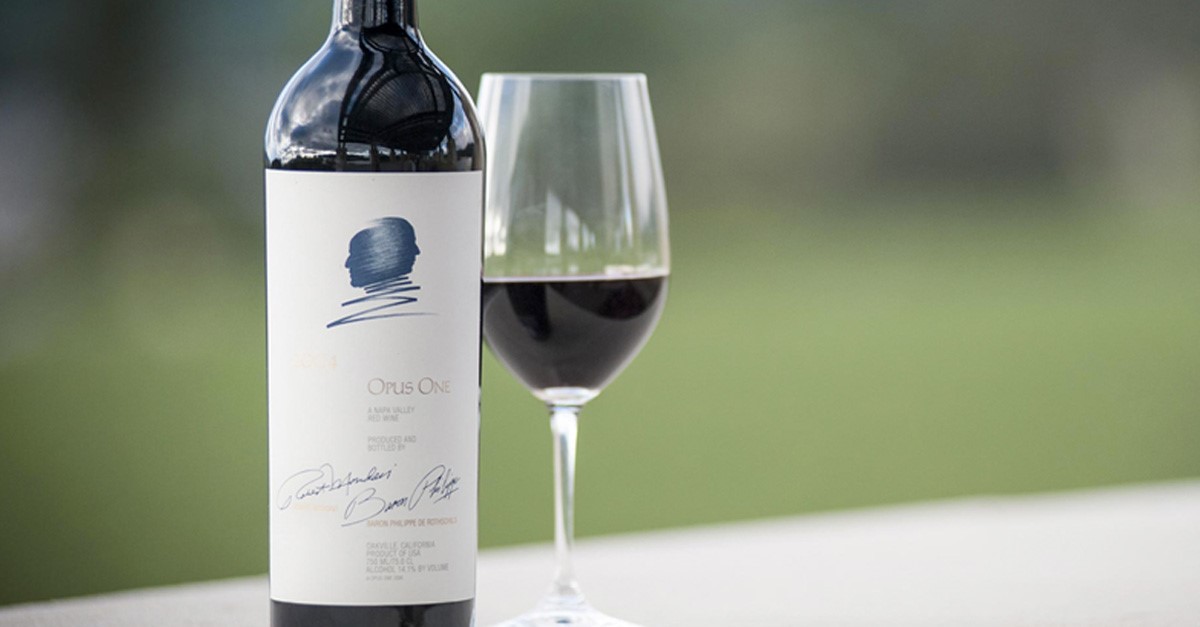
Location: Oakville, Napa Valley, California
Owners: Baronne Philippe de Rothschild, S.A. and Constellation Brands
Founders: Baron Philippe de Rothschild and Robert Mondavi
First vintage: 1979
The Liv-ex Classification 2019: 2nd tier
2019 Power 100: 48th
Average annual production: 25,000 cases
Colour: Red
Grape varieties planted: Cabernet Sauvignon, Cabernet Franc, Merlot, Malbec, Petit Verdot
Wines: Bordeaux-style blend
Earlier this year came the announcement that David Pearson, the long-time CEO of Opus One, will be leaving the Napa Valley estate to embark on a new project with Bill Harlan (Harlan Estate, Promontory, Meadowood, Bond). Pearson has stood as CEO since 2004 and has worked for BPR and Mondavi since the early 90’s. In a Liv-ex interview in 2016, Pearson said that his road to Opus One “was a result of the fortunate chain of events” through his work for Rothschild and Mondavi, and that through the years “everything at Opus One has evolved and changed, while we have stayed true to the original vision of our founders”.
Opus One was founded in 1978 as a joint venture of Baron Philippe de Rothschild and the celebrated American winemaker Robert Mondavi. The first vintage was produced in 1979 from the best vineyards of Mondavi’s winery in Oakville. In 1981, however, the founders began acquiring their own vineyards and went on to purchase around 56 hectares of land in just three years. The brand’s first vintages (1979 and 1980) were simultaneously released in 1984 and quickly became international news.
Since those pioneering early days, the leadership has changed. After a long career at the helm of Chateau Mouton Rothschild, Philippe de Rothschild died in 1988 at the age of 86 and was succeeded by his daughter Baroness Philippine de Rothschild. Robert Mondavi died in 2008, aged 94.
In 2004, four years before his death, Mondavi relinquished his share at Opus One and sold his company to Constellation Brands. The wine conglomerate thus acquired a 50% stake in the estate, though it was agreed that vineyard management and winemaking would be independently overseen by Opus One – headed by David Pearson at the time. Michael Silacci was appointed winemaker and became the first person to assume full responsibility for viticulture and winemaking.
Today, the “Grand Cru” is one of California’s most famous wines and has developed a keen following in more than 90 countries.
The wine is distributed through La Place de Bordeaux, which releases some of the most in-demand wines globally. The 2017 Opus One vintage is expected to land in the coming weeks.
Opus One on the secondary market
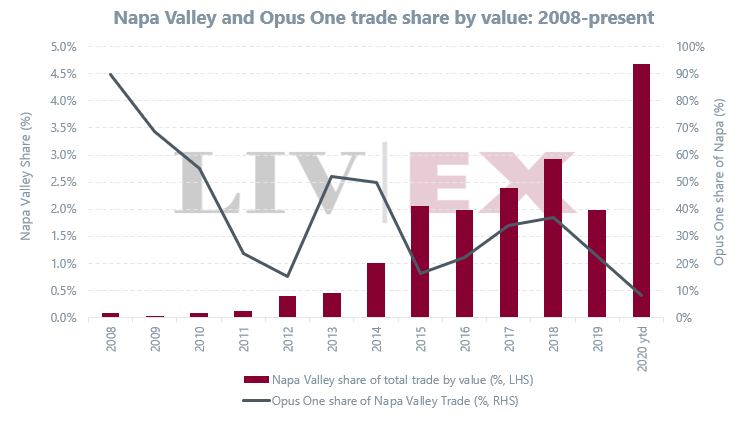
In terms of market share by value, Opus One used to account for the majority of Napa Valley trade: 90% in 2008 when it almost stood alone as a global Californian brand. But with the broadening market for Californian wines (and the high average value of other Napa Valley players), Opus One’s share has dipped. Thus far in 2020, it stands at 8.2%.
However, demand for Opus One continues to go from strength to strength, visualised in the pie chart below. In terms of volumes traded in 2020, Opus One comes only after Caymus, and is more active than Dominus, Harlan Estate and Screaming Eagle.
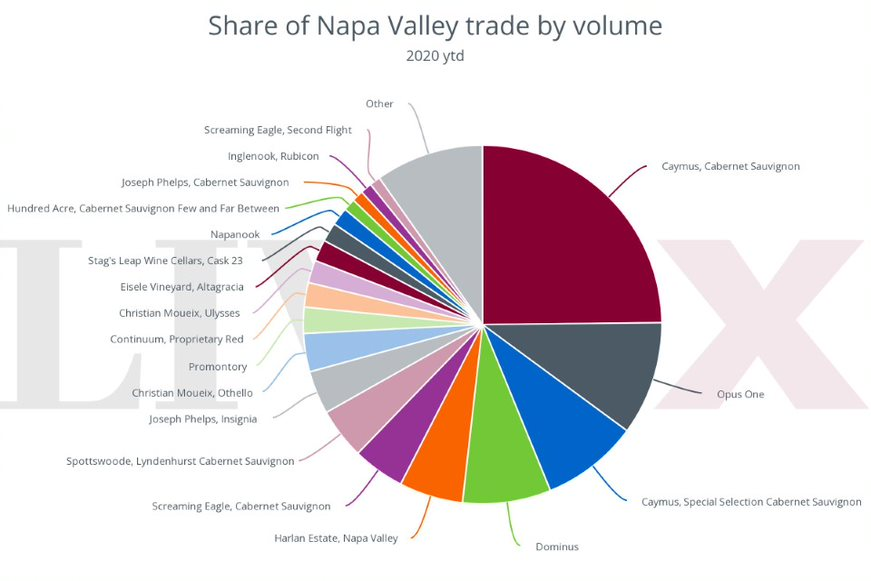
Index Performance
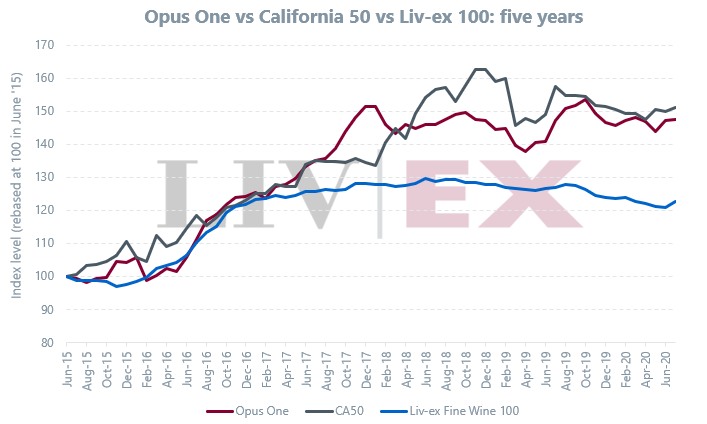
The Opus One index has risen 47.4%, slightly underperforming against the California 50 index (50.9%) but outperforming the industry benchmark Liv-ex 100 (22.8%) over a period of five years.
So far in 2020, the Opus One index has risen 1.2% compared to an increase of 0.5% for California 50 and a dip of 0.6% for the Liv-ex 100.
Pricing and buying appetite
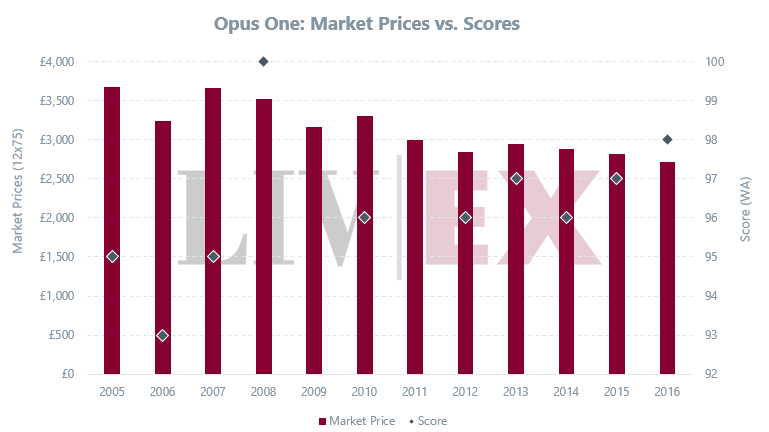
The average Market Price of the last eleven Opus One vintages is £3,147 per case. As the chart above shows, older vintages (pre-2011) tend to command higher prices in the secondary market, trading above the £3k mark.
The latest Opus One vintage, the 2016, which received 98 points from Lisa Perrotti-Brown (WA) currently commands a Market Price of £2,720.
Stay tuned for our analysis of the 2017 release this September.





